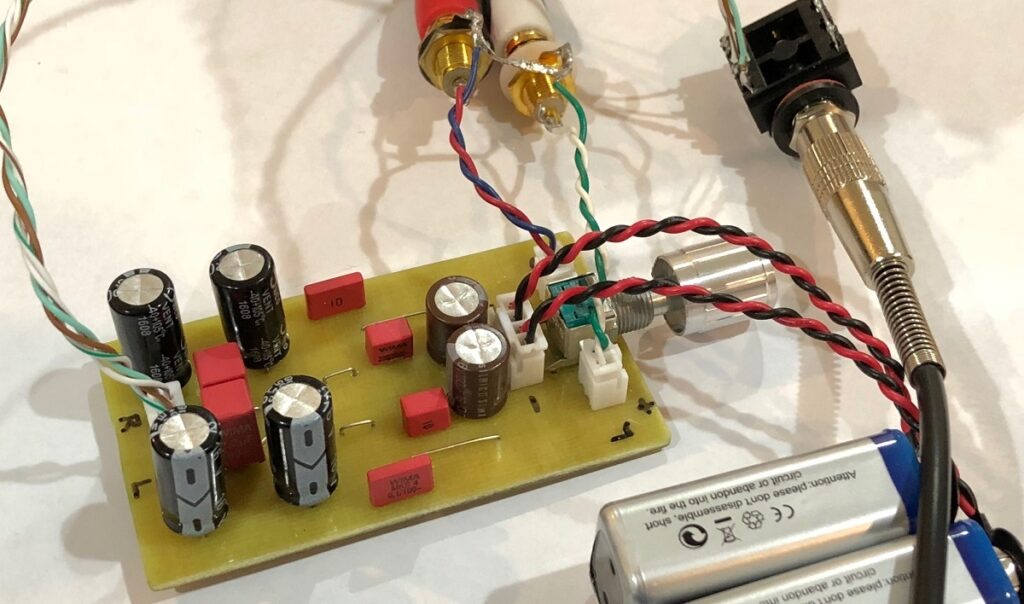If you’re an audiophile or just someone who enjoys quality sound, you may have heard of the CMoy headphone amplifier. This DIY kit has become a popular project for music enthusiasts looking to enhance their listening experience. In this blog post, we’ll explore what the CMoy amp is, why you might want to build one, and what you need to get started.
What is the CMoy Amp?

The CMoy amp, designed by engineer Chu Moy in the early 2000s, is a portable headphone amplifier that enhances audio quality from various sources like smartphones, laptops, and portable music players. Its compact size and simple circuit design make it an ideal project for DIY enthusiasts.
Key Features of the CMoy Amp:
- Improved Sound Quality: The CMoy amp boosts the audio signal, providing clearer sound and better dynamics.
- Portability: Small enough to fit in your pocket, it’s perfect for on-the-go listening.
- Customizable: You can choose different components, enclosures, and even tweak the design to suit your preferences.
Why Build a CMoy Amp?

- Hands-On Experience: Building the CMoy amp gives you practical experience with electronics and audio engineering.
- Learning Opportunity: Understanding the components and circuit design can deepen your knowledge of audio technology.
- Personalization: You can customize the amplifier to your liking, from the choice of op-amps to the casing design.
- Cost-Effective: Compared to buying a high-end headphone amplifier, building your own can be a more budget-friendly option.
What You’ll Need
To get started, you’ll need a few essential components and tools. Here’s a basic list:
Components:
- CMoy Amp Kit: You can purchase a pre-packaged kit that includes all necessary components, or you can source them individually.
- Op-amp: Common choices include the OPA2132 or the TL072 for varying sound characteristics.
- Capacitors and Resistors: Essential for circuit functionality.
- Battery: A 9V battery is typically used for power.
- Potentiometer: For volume control.
- Headphone Jack: To connect your headphones.
- Enclosure: To house your amplifier; many opt for a small project box.
Tools:
- Soldering Iron and Solder: For assembling the components.
- Wire Cutters/Strippers: For preparing your wiring.
- Multimeter: To test your connections and ensure everything is working properly.
Step-by-Step Assembly
While specific instructions may vary depending on the kit you choose, the general assembly process includes:
- Prepare the Enclosure: Drill holes for the jacks, potentiometer, and switch if not already done.
- Solder Components: Begin by soldering the op-amp to the PCB (printed circuit board) followed by other components like resistors and capacitors.
- Connect the Power Supply: Ensure you correctly attach the battery leads and verify connections.
- Assemble the Enclosure: Carefully place the PCB inside the enclosure and secure it.
- Testing: Before fully sealing it up, connect your headphones and test the amplifier with your audio source.
Tuning Your Sound
Once your CMoy amp is built, it’s time to fine-tune your sound. Experiment with different op-amps or capacitor values to alter the audio profile. You might find that a certain combination produces a warmer or more vibrant sound that suits your listening preferences.
External DAC: Is it an absolute necessity for your headphones?
Conclusion
The CMoy amp kit is more than just a DIY project; it’s a gateway into the world of audio engineering and personalized sound. Whether you’re a seasoned builder or a newcomer, assembling your own headphone amplifier can be a rewarding experience. Not only will you end up with a device that enhances your listening experience, but you’ll also gain a deeper appreciation for the technology behind the music you love.
So grab your tools, get your kit, and start building! Your ears will thank you.

